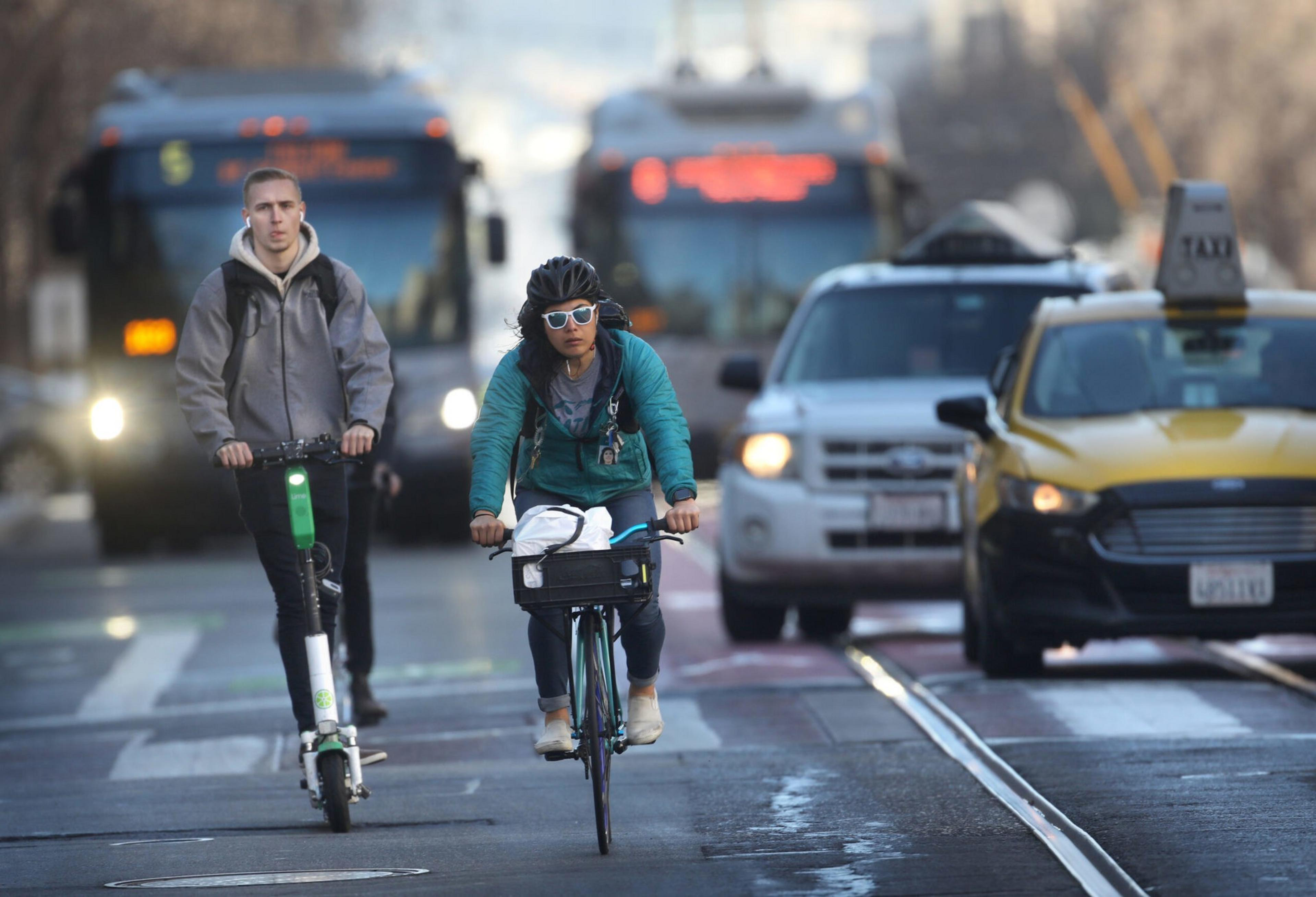Thousands of traffic accidents happen in San Francisco every year, some see pedestrians knocked over, lives lost and cars totalled—but where are you most likely to be hit by a car or get into an accident in the city?
Broadly speaking, intersections are where you’re most likely to be hit while driving or crossing the street.
Using data (opens in new tab) from SF’s police, transportation agency and health department, The Standard has sifted through accident information from more than 18,000 city intersections.
The results show that since 2018, you’re most likely to get hit by a car while driving or walking at Market and Octavia streets.
The top three highest collision intersections are where Market intersects with 5th, 6th and Octavia, with 411 total collisions since city officials started publishing the data in 2005.
And the Mission District saw the most road traffic deaths since 2005, with a total of 10 deaths recorded in the neighborhood.
The most likely spot to smash your car in a head-on collision is at Golden Gate Park’s Crossover Drive, according to data that goes back to 2005.
And from 2018 onwards, Polk and Eddy streets or the intersection of Alemany Blvd and the Southern Freeway ramp have seen the most head-on collisions, with six each in that time period.
Octavia and Market

“They do fly through here,” said Megan Mazzoni, who works nearby.
She said cars are always rushing on and off Highway 101 from the intersection, which is likely why so many accidents happen there.
“Drivers in the city are so aggressive,” said Mazzoni. “They’ll sometimes honk at you thinking they have the right-of-way.”
Data shows that there have been a total of 37 traffic accidents there since 2018. Other intersections along Market Street also made the top 15 accident hotspots during that time, including the 5th, 6th, 8th, 10th and Gough street intersections.
Jim Donahue often rides his bike through the intersection at Market and Octavia streets. He says he is careful but thinks drivers can easily miss the painted bike lanes running along Market Street.
“Just paint the bike lanes bright yellow,” said Donahue. “I feel like cars go over [bike lanes] all the time, they can’t see them.”
Oak and Divisadero

Only slightly less dangerous is Oak and Divisadero, with 35 total accidents since 2018.
“It’s tight, tight, tight,” said Donahue, who regularly rides his bike through the Oak and Divisadero intersection, too. “It’s so bad there.”
Nearby resident Jennifer Lu used to ride her bike through the Oak Street intersection. Lu said drivers often race through it because they are rushing downhill to beat a traffic light leading to Highway 101.
“I would see people get clipped,” Lu said. “There’s not great signage.”
Lu wants more police officers near that intersection pulling over drivers who speed through the light to get on the highway. SFPD have been contacted for comment.
“I don’t think people will pay attention unless you see some scary-looking cops here,” Lu said.
The Mission

The Mission is the deadliest neighborhood for traffic accidents, with 10 deaths across three intersections since 2005.
Transit activist and Mission resident Luke Bornheimer said the neighborhood is densely populated with lots of pedestrians and car traffic on higher speed streets, including Van Ness Avenue and Mission and Dolores streets.
Bornheimer called on the city to install more bus boarding islands, protected bike lanes and raised crosswalks, among other safety measures.
Bornheimer pointed to a proposal by the MTA to introduce a protected bike lane in the center of the street as an indication that the city does not consider biker and pedestrian safety a priority over the ability of cars to quickly navigate the city.
“Advocates have been calling for a fully protected bike lane on Valencia for years, and the MTA have proposed a center-running bike lane that is sandwiched between moving cars, and it’s just another example of the city prioritizing private vehicles over people using sustainable transportation,” Bornheimer said.
SF transportation authority spokesperson Erica Kato said the center-running bike lane on Valencia is a compromise designed to accommodate heavy bike traffic on the street, while also allowing customers and delivery vehicles to park outside stores.
“We recognize that a center-running design is unique, but given the intensity of commercial uses, including numerous Shared Spaces, we are exploring this option as the best possible option for installing protected bike lanes on Valencia while maintaining the vibrancy of the corridor,” Kato said of the pilot scheme.
Vision Zero
The SFMTA did not respond to questions about any planned new changes to make streets safer, but affirmed their commitment to ending traffic injuries and deaths as a part of their 2014 Vision Zero plan, which involves longer street crossing times and more clearly painted crosswalks on roads marked by the city as especially dangerous (opens in new tab) to pedestrians.
“We are continually pushing the status quo and setting bold goals to make our city streets safer for all,” said Kato. “Every death on our streets is one too many, and we are committed to reaching our Vision Zero goals through the bold strategies laid out in our citywide plan.”
The Mayor’s office has been contacted for comment.
